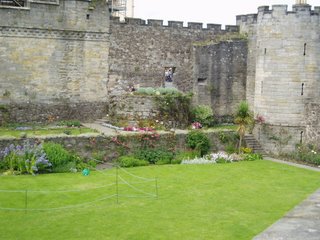


About an hour outside of Glascow is Sterling Castle. Considered a part of the Lowlands and a central area of Scotland, Sterling Castle became a key stronghold for Scottish independence.
England had control of the castle up until around 1296 when William Wallace recaptured the castle by winning the Battle of Sterling Bridge. Eventually the castle went back to the English, but only for 10 years because Robert the Bruce reclaimed it in 1314 after he won the Battle of Bannockburn. Upon this victory, Scotland secured it's independence from England for quite some time. The castle is an ideal location as is in central Scotland and surrounded by some impressive mountains.
Also noteworthy is the fact that Mary Queen of Scots was crowned Queen of Scotland here at the mere age of nine months. Mary's son, James VI, was baptized down the road at the Holy Rue Church. Later on he would also be crowned King of England and renamed James I. James I was the first King to have it be a requirement that the Holy Bible be translated to English. Thus, the King James version of the Bible was created.
Again, the views of the countryside and the city of Sterling from the castle are incredible. You would certainly be able to see an enemy or foe from miles away at this vantage point.
What is also amazing is that they have kept all the original walkways along the upper decks of the outer walls. One does get a sense of being a guard on duty as your stroll along these walkways as they nearly wrap around the entire castle. These walkways can get high up and with no protective banisters, it can be a bit unnerving at times. Still, the walkways are rather wide so it's not too dangerous and are manageable.
There is a lone monument to William Wallace directly across from the castle as a tribute to the Scottish Warrior. In this particular area where the monument stands, is where Wallace camped before he took over the castle from the British.

No comments:
Post a Comment